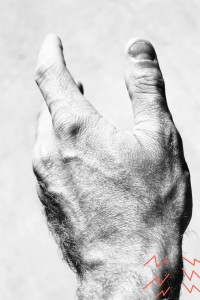DeQuervain’s tendonitis is a common tendinopathy causing function-limiting pain on the radial aspect of the wrist involving the extensor pollicis brevis (EPB) and abductor pollicis longus (APL) tendons of the thumb. The condition receives its eponym from the Swiss physician Fritz DeQuervain who described several cases of “washerwoman’s sprain” in the late-1800s. The condition has also been termed “smart phone thumb” and “mommy’s wrist pain” in the media recently.
Clinical Findings

Pathophysiology
The extensor tendons of the hand and wrist are contained within six compartments on the back of the wrist. The first extensor compartment on the radial styloid contains the extensor pollicis brevis (EPB) and abductor pollicis longs (APL) tendons, which extend and abduct the thumb, respectively. DeQuervain’s tendonitis is defined as a painful tenosynovitis of the APL and EPB tendons within the first extensor compartment. Instead of gliding smoothly within the sheath, these tendons can meet resistance, causing pain with movement of the thumb and wrist.
Causes
Forceful, repetitive gripping tasks have traditionally been implicated in causing DeQuervain’s. Increasing use of smart phones for texting has been thought to contribute recently. In many cases, however, the etiology is idiopathic. The condition is most common in young females, classically after giving birth. Hormonal changes, fluid retention, and increased functional demands of the mother are implicated as contributory factors. Lifting a newborn repetitively with the thumb abducted away from the palm introduces strain on the EPB and APL tendons in the hand and wrist, for example.
Diagnosis
The diagnosis of DeQuervain’s is based on history and physical exam. A history of radial-sided wrist pain exacerbated with thumb motion, tenderness and swelling along the radial styloid, and a positive Finkelstein’s test are typically diagnostic. Finkelstein’s test involves asking the patient to flex the thumb into the the palm, clasp the fist over the thumb, and ulnar deviate the wrist. A positive test elicits pain with this maneuver. As a word of caution, this test can be excruciating for some patients.
Radiographs can be helpful to rule-out fracture or degenerative changes arthritis of the thumb carpometacarpal (CMC), wrist scapho-trapezio-trapezoid (STT), or radio-scaphoid joints. MRI and blood test studies are typically unnecessary.
Treatment
Most cases of DeQuervain’s tendonitis resolve with conservative treatment. Use of an off-the-shelf thumb spica splint immobilizes the thumb and wrist to rest the EPB and APL tendons. Rest, activity modification, and use of oral NSAIDs can reduce pain. Hand therapy is often helpful to improve tendon gliding, and therapy modalities such as iontophoresis may reduce inflammation and pain. Hand therapists can also make custom thermoplastic splints for immobilization. Additionally, corticosteroid injections may result in symptom resolution in approximately 80% of patients. I tell my patients that one or two “cortisone shots” can be curative.
For the patients who do not respond to conservative treatment, surgical intervention is a reasonable option. Release of the first extensor compartment sheath through a small incision at the radial styloid allows for improved gliding of the EPB and APL tendons and a significant reduction in pain. This procedure is performed as an outpatient under local anesthesia with or without intravenous sedation. Published outcomes from surgical release have been good-to-excellent for most patients.
